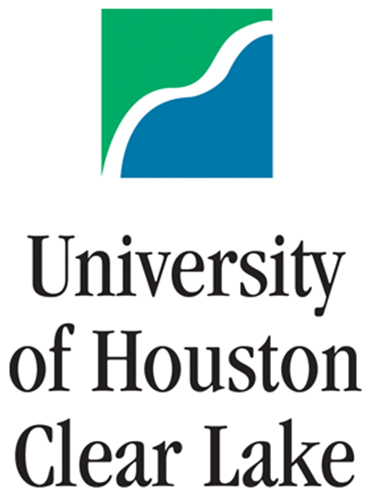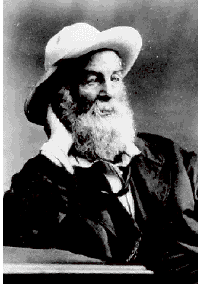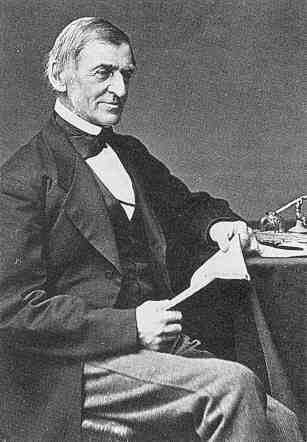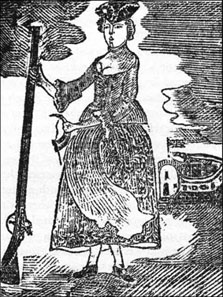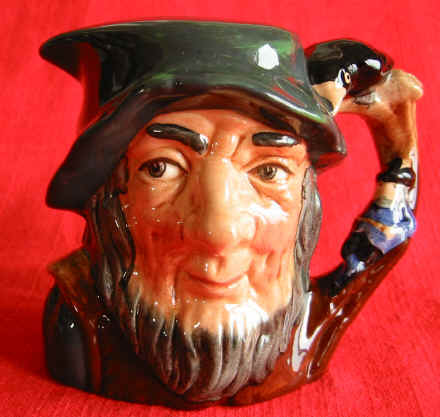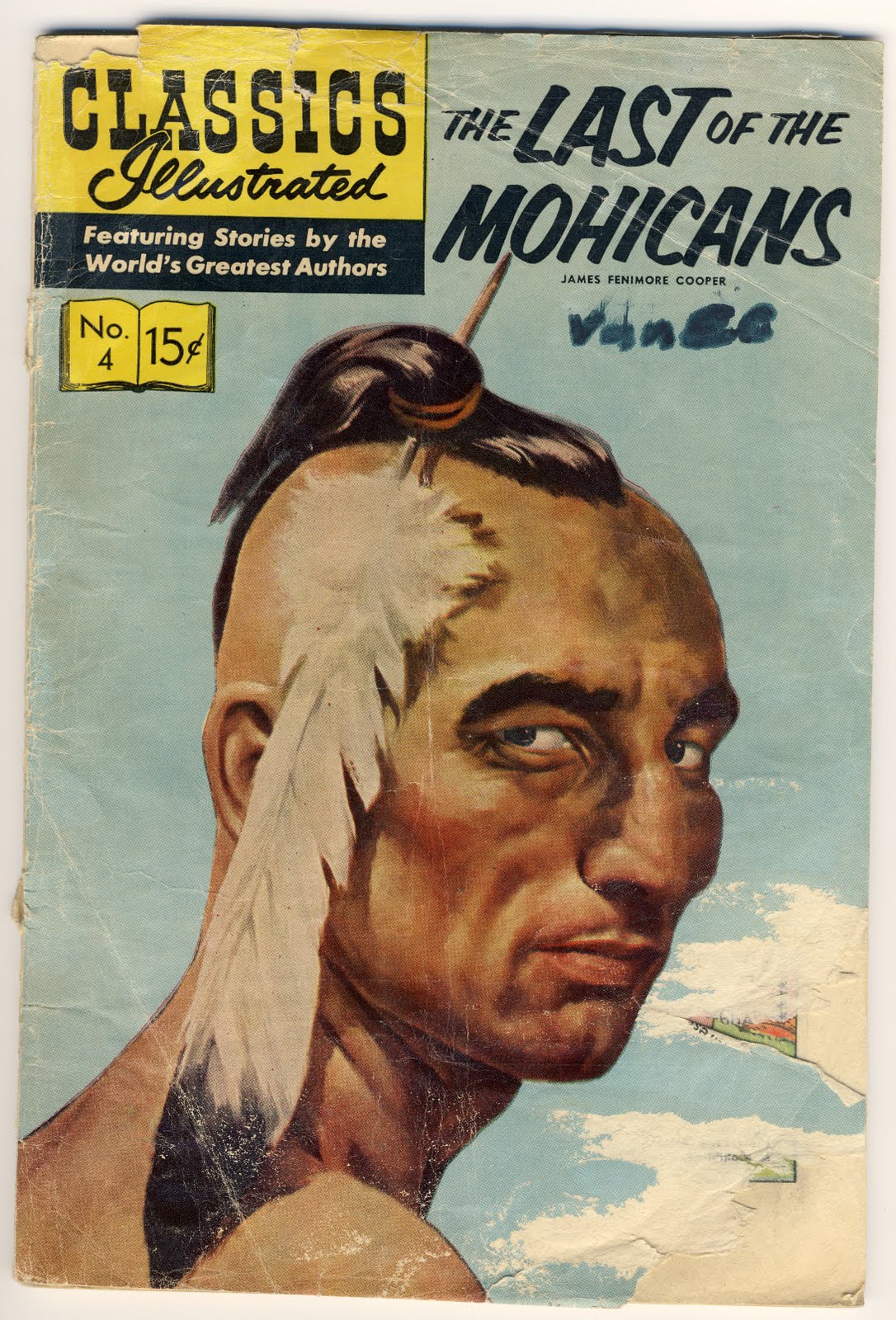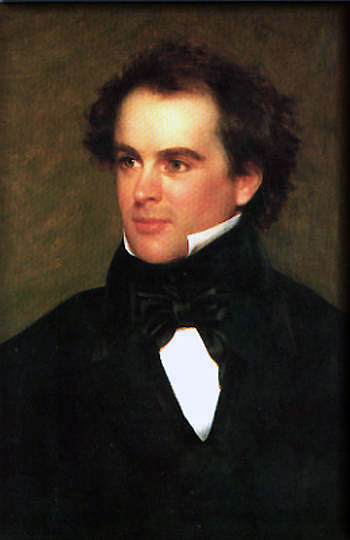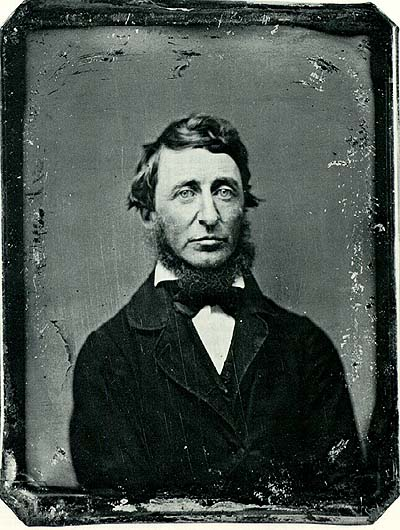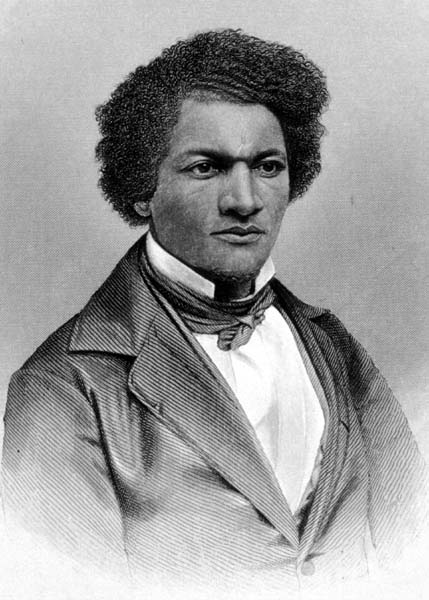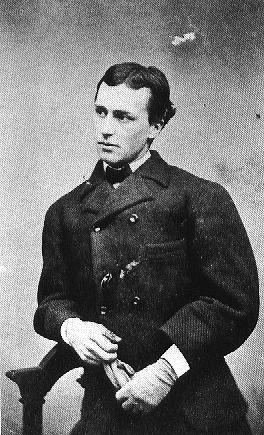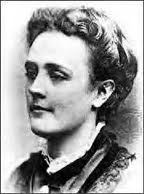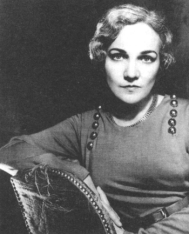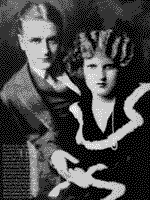|
LITR 5431 Seminar in American Literature
Romanticism Homepage & Syllabus
coursesite URL:
http://coursesite.uhcl.edu/hsh/whitec/litr/5431rom |
|
|
Instructor: Craig White Phone: 281 283 3380. Email: whitec@uhcl.edu Office: Bayou 2529-8 Office Hours: M 4-7, T 4-7, & by appointment
Attendance
policy:
|
Midterm & Research Proposal research essay (due 16 November) research journal (due 16 November) 2 research posts
Conference Proposal &
Presentation
Final exam
poetry reader / discussion leader
|
|
|
Reading & Presentation Schedule Fall 2016 |
|
|
Tuesday, 23 August 2016: introduction Readings: |
Agenda: intro, schedule, discussion syllabus, discuss Romanticism midterm, presentations, model assignments ID & preferences, assignments [break] self-introductions lyric poetry (review poetry presentation) preview next week's readings |
|
|
Self-Introduction Name? Degree or course of studies? What stage in graduate career? Professional or vocational application of studies? What do you know (or guess) about Romanticism? American Romanticism? Which writers would you automatically associate? Discussion Questions: 1. What is Romanticism & why does it matter? Where have you encountered the word before, with what associations? 2. What is Romantic about each poem? Presence of Romance narrative? Non-Romantic or anti-Romantic elements |
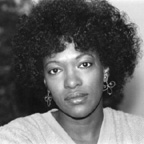 Rita Dove, b. 1952 |
![]()
|
Tuesday, 30 August 2016: identifying Romanticism Readings: Poe, Ligeia (1838, 1845) (gothic) Emerson, selections from Self-Reliance (1841) & The Over-Soul (1844) (Transcendentalism) reading discussion leader(s): Michael Osborne (Poe); Umaymah Shahid (Emerson) poetry: Walt Whitman, "There was a Child Went Forth" (1855) poetry reader / discussion leader: instructor web / outside text review: Genesis & Letters of Columbus reviewer: instructor |
Agenda: website, presentations (handouts) course objectives, periods Emerson: Umaymah (Self-Reliance) Poe: Michael review discussion-leader assignment > poetry-reader assgnmt Whitman: course arrangement, next week's assignments Genesis & Columbus as Romanticism and Romance? |
|
|
Discussion Questions: 1. What conventions, subjects, narratives, and forms of Romanticism are identifiable in either or both texts? 2. What differences between Emerson and Poe? How may they both be Romantic writers or stylists? 3. What appeals to readers then and now? Why does Poe remain the most popular of American classic writers, while Emerson remains essential to the traditional canon of American literature? 4. How is Poe's or Emerson's Romanticism essentially American—or not? 5. Guidance: identify Poe with the gothic, Emerson with Transcendentalism, but look for the sublime & the romance narrative in both. Question(s) for Whitman poem: 1. What familiar Romantic elements? Romance narrative? Where does Whitman exceed Romanticism or veer into Realism? 2. How does Romanticism affect poetic form? (Whitman as founder of free verse; effort to write poetry for common people) |
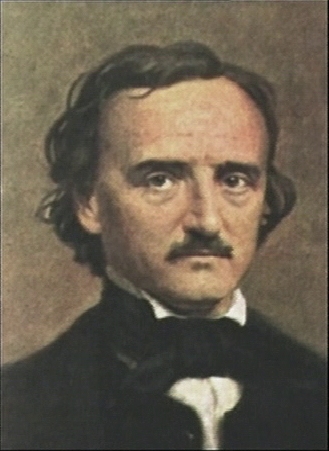 Edgar Allan Poe, 1809-49 |
![]()
|
Tuesday, 6 September 2016: early American literature anticipating Romanticism Readings: John Smith, from A General History of Virginia (1624) Mary Rowlandson, Narrative of the Captivity & Restoration of Mrs. Mary Rowlandson (1682) (captivity narrative) Jonathan Edwards, Sinners in the Hands of an Angry God (1741), A Personal Narrative, & Note on Sarah Pierrepont (The Great Awakening) Thomas Paine, from The Age of Reason (1794) (Enlightenment period) (Declaration, U.S. Constitution) reading discussion leader(s): Jessica Myers (Edwards &/or Paine); instructor (Rowlandson &/or Smith) poetry: Anne Bradstreet, "To my Dear and Loving Husband" (cf. E.B. Browning, "Sonnets from the Portuguese #43") poetry reader / discussion leader: Caryn Livingston |
Agenda: presentations, rationale Edwards & Paine Bradstreet: Caryn [break] Discussion: on Smith and Rowlandson Gothic in Smith (15), Rowlandson (0.3a; 7.1)? assignments
terms: romance narrative, captivity narrative, Romantic rhetoric |
|
|
Discussion Questions for Pre-Romantic texts: 1. What roots or prototypes for Romantic forms in today's readings? How may these prototypes evolve or develop in Romantic era and beyond? What resistance to reading these texts as proto-Romantic? 2. Compare Edwards (and Paine) to Emerson, Poe, Whitman, Dickinson of Romantic era (a century or more later). A common comparison-with-continuity is between Edwards as a late Puritan and Emerson as a Romantic Transcendentalist. 3. How does Paine's Deism anticipate Transcendentalism? (+- Unitarianism) 4. Smith's and Rowlandson's texts are genre-identified as captivity narratives, one of America's unique contributions to world literature. How may the captivity narrative conform to the romance narrative? (Or not?) 4a. How does the captivity narrative experience differ for a man (Smith) and a woman (Rowlandson)? 5. Re Pocahontas in Smith's History of Virginia, how has this legend been increasingly romanticized ever since, up to the Disney animovie? What elements in Smith's story encourage or resist romanticizing? In what cases is Romanticization a direct violation of factual truth? Or is Romanticism another kind of truth or reality akin to myth? |
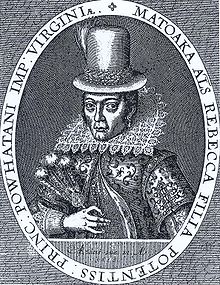 Mataoka a.k.a. Pocahontas a.k.a. Rebecca Rolfe (c. 1595-1617) (engraving by Simon van de Passe) |
![]()
![]()
![]()
![]()
![]()
![]()
![]()
![]()
![]()
![]()
American Renaissance 1820s-1860s:
Romantic period in American Literature
![]()
![]()
![]()
![]()
![]()
![]()
![]()
![]()
![]()
![]()
|
Tuesday, 13 September 2016: early Romantic fiction Readings: Washington Irving, Rip Van Winkle & Legend of Sleepy Hollow (1819-20) James Fenimore Cooper, Introductory materials + chapters 1-2 of The Last of the Mohicans selections reading discussion leader(s): Peter Becnel (Irving) web / outside text review: Classical Music & Romantic Music reviewer: instructor web / outside text review: Enlightenment / Romantic visual art reviewer: instructor |
Agenda: midterm / research proposal reading: Peter [break] assignments: guide to Mohicans; midterm & research options periods / visual art: instructor Romantic music: instructor |
|
|
Discussion Questions: 1. Besides cartoons, TV, and movies, how and why does everyone know the stories of Rip Van Winkle and Legend of Sleepy Hollow, even if never read before? What about these stories is essentially American and appeals to American readers? 2. Irving's stories are early Romanticism, but what emergent Romantic themes or styles appear in Rip Van Winkle and Legend of Sleepy Hollow? 2a. Identify the gothic and the sublime in Irving's stories and chapters 1-2 of Mohicans—also romance & historical fiction. 2b. Rip Van Winkle & Sleepy Hollow share styles of the 18c Enlightenment (esp. satire & humor) as well as 19c Romanticism-—identify. Terms / Periods backgrounds: Irving's stories (RVW & Sleepy Hollow) show a style in transition between the Enlightenment (satire, humor, wit, irony, reason, society) and Romanticism (the romance, adventure, Romantic characterization, outdoor adventure). Except for some satire and (weak) humor associated with David Gamut, Last of the Mohicans is full-blown Romanticism: much more serious about itself and its characters, little humor, frontier instead of society. |
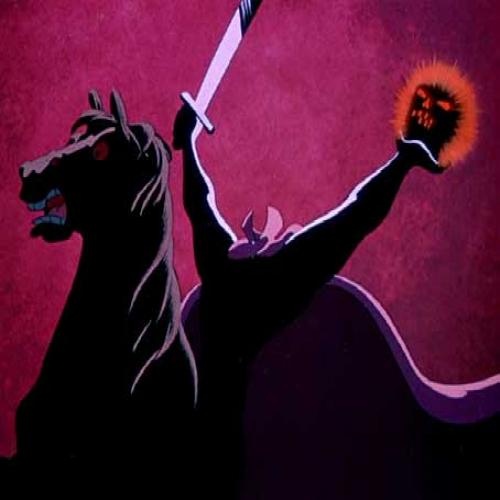 1949 Disney animation of Legend of Sleepy Hollow |
![]()
|
Tuesday, 20 September 2016: Noble Savages: The Last of the Mohicans Readings: conclude selections from The Last of the Mohicans (1826) Iroquois origin story featuring the tortoise (Uncas's tattoo) Mark Twain & D.H. Lawrence on Cooper & Leatherstocking Tales reading discussion leader(s): Caryn Livingston (may also include Indian texts below) poetry: James Wright, "A Blessing" poetry reader / discussion leader: Stephen Defferari web / outside text review: William Apess (Pequot), "An Indian's Looking-Glass for the White Man" (1833) & The Cherokee Memorials (1820s-30s); Trail of Tears reviewer: instructor |
Agenda: assignments: chronology + range of Romanticism; next week's Tuesday office hours are 1-4 Romanticism; Historical fiction; French and Indian War Cooper: Caryn American Indian texts poetry: Stephen? |
|
|
Discussion Questions:
1. Written only 6-7 years after
Sleepy
Hollow &
Rip Van Winkle, how is
Mohicans more
thoroughly
Romantic? 2. Discuss Twain's & Lawrence's post-Romantic revaluations of Cooper's Romanticism? What are Romanticism's shortcomings and virtues? Cooper's failings as a writer are many, but how may he still claim our attention and a place in American literature? 3. How does Mohicans use the
gothic (esp. its
color code) to
explore American race relations and taboos?
4. How does
Romanticism explore the unknown as
Realism may not? American Indian texts: 1.What
alternative realities
or narratives emerge from
texts representing repressed or marginalized voices?
2.
|
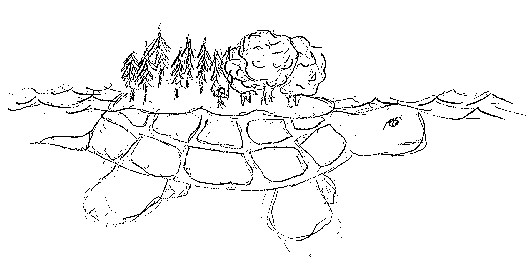 tortoise as foundation of earth |
![]()
|
Tuesday, 27 September 2016: psychological & puritan gothic Readings: Edgar Allan Poe (1809-49), The Fall of the House of Usher (1839, 1840); William Wilson (1839) Nathaniel Hawthorne (1804-64), The Minister's Black Veil (1836), Young Goodman Brown (1836) reading discussion leader(s): Stephen Defferari (Hawthorne), Michael Osborne (Poe) Romanticism: My Reading: Umaymah Shahid |
Agenda: midterm > research proposal + research options; assignments Umaymah's Romanticism Hawthorne: Stephen [break] Poe: Michael |
|
|
Discussion Questions: 1. Compare-contrast Poe's & Hawthorne's use of the gothic. What common forms and purposes? What distinct backgrounds (or traditions) & purposes? 2. What is the psychological and moral significance of the gothic? Why does the gothic recur in various dimensions of popular literature and culture? What western values are implicit in the color code of the gothic? (Prepare for inversion in Harlem Renaissance.) 3. How does Poe's gothic conform more to European models of the gothic? How is Hawthorne's gothic more distinctly American, or how does he adapt the gothic to early American Puritanism? 4. How might Hawthorne, Poe, or their characters be regarded as Byronic heroes? 5. What other "signature" styles for Hawthorne and Poe do these stories show? 6. How are Hawthorne & Poe both Romantic? How do they vary, complicate, or transcend Romanticism? How are both American? |
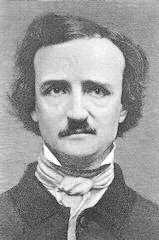 Poe 1809-49 |
|
Tuesday, 4 October 2016: Transcendentalism Readings: Ralph Waldo Emerson, selections from Nature (1836) + Thoreau (1862) (Transcendentalism) Henry David Thoreau, Resistance to Civil Government (1849) (historical backgrounds to civil disobedience) Margaret Fuller, The Great Lawsuit (1843) (Transcendentalism) reading discussion leader(s): Peter Becnel (Emerson &/or Thoreau); Liz Davis (Fuller) poetry: Denise Levertov, "The Jacob's Ladder" poetry reader / discussion leader: Stephen Defferari web / outside text review: US-Mexican War; memoir of Juan Seguin reviewers: instructor |
Agenda: assignments (American Renaissance), midterm Transcendentalism > Peter poetry: Stephen Emerson: Fuller: instructor [break] Thoreau: Liz Mexican American War; Juan Seguin: |
|
|
Discussion Questions: 1. How is Transcendentalism consistent with or distinct from Romanticism? 2. What formal, cultural or historical factors identify all three authors as Transcendentalists? 3. To what varying purposes does each author spin or vary the Transcendentalist style or forms? 4. Is Transcendentalism merely escapist Idealism, or does it have political and economic implications and consequences? Discussion for US-Mexican War & memoir of Juan Seguin: The American literary canon expands and diversifies to include texts and voices representing different genders, races, and classes. Courses in Multicultural Literature and Contemporary American Literature frequently feature leading Hispanic and Mexican American Authors. But the further back in American literary history we go, the more challenging inclusiveness of Latinos becomes. Why? What historical factors in American and Mexican literary history? What are the possibilities for including earlier Mexican American literature? |
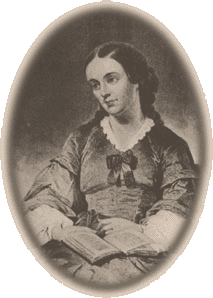 Margaret Fuller, 1810-50 |
![]()
Tuesday, 11 October 2016 midterm exam & research proposal—no class meeting; instructor keeps office hours
Email midterms due by Wednesday 12 October midnight.
![]()
First Research Post due week of 19-24 October (see research options)
![]()
|
Tuesday, 18 October 2016: slave narratives: romance or reality? Readings: Frederick Douglass, Narrative of the Life (1845); Harriet Jacobs, Incidents in the Life of a Slave Girl (1861) reading discussion leader(s): Brittney Wilson (Jacobs); Jessica Myers (Douglass) poetry: Robert Hayden, "Those Winter Sundays" poetry reader / discussion leader: Peter Becnel web / outside text review: Frederick Douglass, My Bondage and My Freedom (1855) & Life & Times of Frederick Douglass reviewer: instructor on Frederick Douglass autobiographies < Jason Kimbrell, LITR MA 2013: Investigating Frederick Douglass: A Research Journal (2012) |
Agenda: midterms, assignments, schedule (American Renaissance) Liz on Fuller? Douglass: Jessica [break] Douglass by instructor poetry: Peter Jacobs:
|
|
|
Discussion Questions: 1. What problems arise in discussing genres like slave narratives in terms of literary styles like Romanticism or Realism? What challenges, problems, or advantages from discussing such texts as literature rather than cultural or historical documents? 2. What may be inherently Romantic about the symbols and values of the slave narrative? How may its structure or sequence resemble the romance narrative? 3. What realities or realistic descriptions fall outside Romantic style or violate the romance narrative? 4. How to discuss slavery, esp. in a post-Confederate state like Texas? (Standard answers from dominant culture: "That was a long time ago"; "We wouldn't have done that.")
|
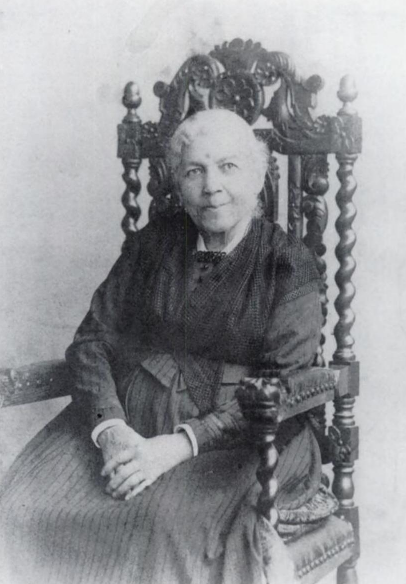 Harriet Jacobs, 1813-97 (photo from 1894) |
![]()
|
Tuesday, 25 October 2016: American Renaissance of Women's Writing Readings: Susan B. Warner, selections from The Wide, Wide World (1850) (read chs. 1, 2, 5, 6, 10) Maria Susanna Cummins, selections from The Lamplighter (1854) Harriet Beecher Stowe, selections from Uncle Tom's Cabin (1851-2) (chs. 1, 4, 7, 9) reading discussion leader(s): (Warner &/or Cummins); Umaymah Shahid (Stowe) poetry: Elizabeth Bishop, "The Fish" poetry reader / discussion leader: Caryn Livingston |
Agenda: conclude Jacobs? Warner & Cummins: instructor [break] Stowe: Umaymah poetry: Caryn
|
|
|
Discussion Questions: 1. Wide, Wide World (1850) was the USA's bestselling novel until Uncle Tom's Cabin (1851-2), and both were outsold by The Lamplighter (1854). How do these texts resemble or differ from modern popular literature? What are the continuing attractions of domestic literature? What are these popular novels' strengths and weakness for critical study and teaching? 2. As with the slave narratives, where does Romanticism give way to Realism, with what literary satisfactions or frustrations? 3. Evaluate sentiment & sentimentality—how to react to scenes of tears, mothers' fears, etc.? How does Uncle Tom's Cabin combine domestic sentimentality with political activism? Compare Thoreau's Resistance to Civil Government; backgrounds to civil disobedience. 4. How does Uncle Tom's Cabin correspond in form and content to the slave narrative genre? 5. If you've read John Bunyan's Pilgrim's Progress (1678), how does Wide, Wide World resemble it, particularly as a type of spiritual romance? 6. All these texts were written in the context of the "Second Great Awakening" of American evangelism in the early 19th century. Evaluate the evangelical content in today's readings. How to teach such texts in a public school or university? How much do the texts succeed as cultural history or as literature? How do evangelical values correspond or not to Romanticism? 7. Compare Jacobs's Incidents in the Life of a Slave Girl as an example of how domesticity and the slave narrative meet. |
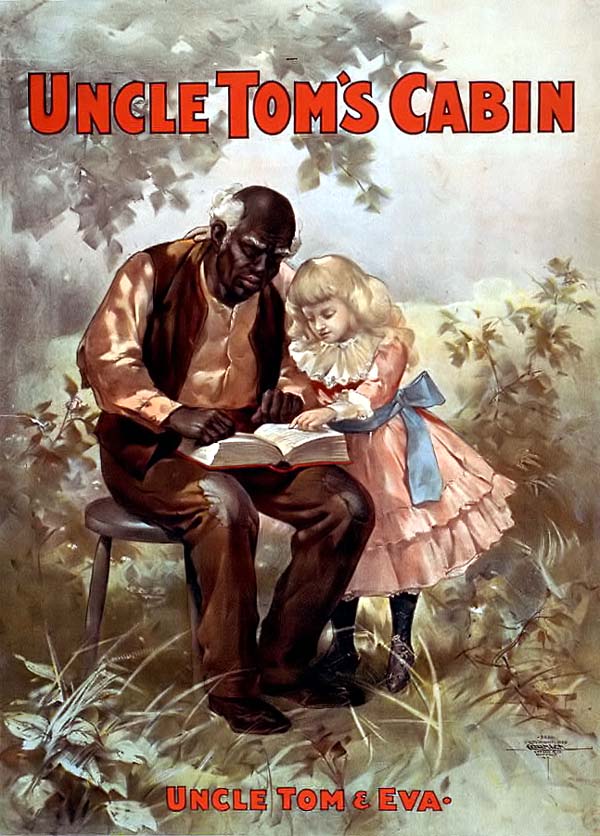 |
![]()
![]()
![]()
![]()
![]()
![]()
![]()
![]()
![]()
![]()
Post-Romantic
American Literature: Realism &
Modernism
Identify Romantic forms in later contexts
![]()
![]()
![]()
![]()
![]()
![]()
![]()
![]()
![]()
![]()
|
Tuesday, 1 November 2016: Romanticism in Realism Readings: Henry James, Daisy Miller (1878): Part 1 & Part 2 reading discussion leader(s): Caryn Livingston poetry: Theodore Roethke, "I Knew a Woman" poetry reader / discussion leader: Stephen Defferari |
Agenda: assignments periods as subject of literary studies (Realism) Daisy Miller: Caryn poetry: Stephen |
|
|
Background: James (w/ Mark Twain, Edith Wharton, & William Dean Howells) is a leading author of the American period / style of Realism—in James's case "psychological realism." Realism as a movement reacted against Romanticism but retained features that may still seem residually Romantic.. Daisy Miller, James's most popular work, appears in 1878, a long decade after the Civil War. Culturally, Realism may appear as a period of comparative exhaustion or retrenchment following the enormous social movements and changes of the antebellum era and Civil War. Compare 1960s-1980s. Discussion Questions: 1. How have setting, characterization, and narrative (incl. romance) changed since the Romantic era? Or not? 2. If both Romantic and Realistic elements co-exist, what is the effect of their mixing or friction? Consider irony, but other possibilities. 3. Note the story's repeated references to Lord Byron (1788-1824). How does the story manipulate elements of Romanticism and turn them to Realistic ends? 4. Consider the character Daisy Miller as a new American woman visiting Europe but uninhibited by gender or class traditions of the Old World. How does Daisy's image conform to styles or values of Romanticism? How does her voice challenge such descriptions or motives? What actions throw characterization of her as Romantic into question or doubt? 5. Henry James is critically regarded as one of the USA's greatest authors and inspires enormous quantities of scholarship yearly. What is his status in the literary canon? What appeals or detractions? How is Daisy quintessentially American? Why is Randolph surprised that Winterbourne is an American? (James's "International Theme.") 5a. Compare James's style and psychological content to Hawthorne? 5b. Daisy Miller as novel of manners? 6. Jessica's question: Why must Romantic heroines who rebel agains society invariably die? (e.g. Edna in The Awakening [1899]) |
 Cybill Shepherd in Daisy Miller (d. Peter Bogdanovich, 1974) |
![]()
|
Tuesday, 8 November 2016: local color / regionalism Readings: Charles W. Chesnutt, "The Goophered Grapevine" (1887) Sarah Orne Jewett, "The White Heron" (1886) & "The Town Poor" (1890) reading discussion leader(s): Jessica Myers poetry: Mary Oliver, "Wild Geese" poetry reader / discussion leader: Caryn Livingston |
Agenda: Local color, Realism & Romanticism discussion: Jessica: [break] poetry: Caryn schedule > Modernism |
|
|
Discussion Questions: 1. The Local Color movement, a.k.a. Regionalism, was concentrated in the Realistic period of the late 19th-early 20th centuries. Identify Realistic features of these stories' style, but what Romantic styles or values remain? 2. Local Color writers typically represent speech in dialect, which is now discouraged by editors, publishers, and creative writing teachers. Why the change? Why did dialect work then but not now? 3. Local Color writing is often appealing to readers but overlooked as a major movement. Why is it attractive but critically neglected? 3a. Women read and wrote much of the Local Color movement. What are its appeals to an audience of women, and how may it represent a feminist voice or tradition? 4. By this point in the semester, rehearsing period or style terms like Romanticism and Realism may seem obvious, but what usefulness do such broad terms serve for scholarship and teaching? Scholarship is so specific that broad terms like Romanticism and Realism or even Regionalism may rarely be examined in depth except in reference works like Handbooks, Encyclopedias, and Companions—but secondary scholarship often refers to such terms. |
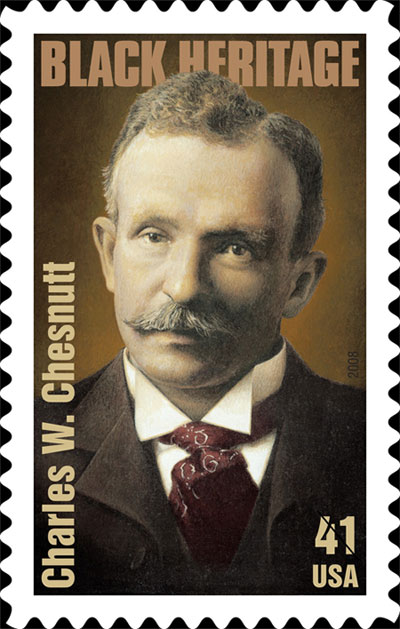 1858-1932 |
![]()
Tuesday, 15 November 2016: no class meeting (Tuesday meetings received an extra class meeting this semester.)
Instructor holds office hours 1-4pm, 7-10pm Tuesday 15 November.
Final research projects due midnight Wednesday 16 November (includes Essays, Journals, Conference presentations, or 2nd Research Posts)
![]()
|
Tuesday, 22 November 2016: Modernist Romanticism Readings: William Faulkner, "A Rose for Emily" (1930) Katherine Ann Porter, "The Grave" (1935) Thomas Wolfe, The Lost Boy (1938) reading discussion leader(s): Caryn Livingston poetry: Sylvia Plath, "Blackberrying" (1960) poetry reader / discussion leader: Liz Davis |
Agenda: schedule, final class preview fiction: poetry: Liz
|
|
|
Discussion Questions: 1. How has Romanticism been absorbed or transformed as Modernism? How does Romanticism recognizably survive by adaptation to Modernist needs? What does Modernism add to or subtract from Romanticism? What styles in these stories are identifiable as Modernism? (Consider stream-of-consciousness narration, symbolism, primitivism, sexuality.) 2. These stories retain Realistic elements or forms. Where do the styles of Modernism, Romanticism, and Realism (incl. Local Color) meet or separate? (These major styles also meet in Modernist fiction by Fitzgerald and Hemingway.) 3. Both "A Rose for Emily" and "The Grave" refer directly to African American characters. Are these references patronizing sentimental stereotypes, or meaningfully realistic and symbolic? 4. In what ways does Faulkner's writing here and elsewhere qualify as "Southern Gothic?" What other authors might be included in this category? 5. Overall, how has Romanticism changed across a century or more? Is Romanticism still recognizable in the heroic sprawl of Modernism? What parallels between Romanticism and Modernism? Is Modernism an evolution or a radical break from Romanticism and Realism? How may Romanticism appear in current literature, either as postmodern "literary" literature or as popular or genre literature? |
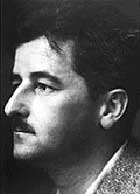 William Faulkner (1897-1962) |
![]()
|
Tuesday, 29 November 2016: Jazz Age / Harlem Renaissance (continue Modernism) Readings: F. Scott Fitzgerald, "Winter Dreams" (1922) Claude McKay, "Harlem Dancer," "Harlem Shadows," "If We Must Die" Langston Hughes, "Harlem" & "Dream Variations," "I Too Sing America," "Jazzonia," "The Negro Speaks of Rivers," "Night Funeral in Harlem" Zora Neale Hurston, "How it Feels to be Colored Me" reading discussion leader(s): Michael Osborne (Fitzgerald); Stephen Defferari (Harlem Renaissance) poetry: Tracy K. Smith, "I Don't Miss It" poetry reader / discussion leader: Jessica Myers web / outside text review: Countee Cullen, "Yet Do I Marvel"; "From the Dark Tower"; "For a Poet": instructor |
Agenda: final exam Harlem Renaissance: Stephen Tracy K. Smith poem: Jessica [break + evaluations] Fitzgerald: Michael Hughes, Cullen questions (exam C3, C4) |
|
|
Discussion Questions: Fitzgerald, "Winter Dreams": 1. If Fitzgerald is a Modernist with a Realistic surface, how do he and this text continue to represent a romance narrative or a Romantic perspective? How much is Fitzgerald's persona, mystique, or perspective not Romantic but merely American? How has Romanticism changed in the century since its peak? 2. How does Judy Jones resemble Daisy Miller as "the American Girl" and subject / object of romance? (Or Cora in Mohicans, Poe's Ligeia, Jacobs's slave girl, Sylvia in "White Heron," or Miranda in "The Grave?") 3. If Americans can't talk about class, how does Fitzgerald bring us near to the subject? Compare "class" as identity-determinant with race and gender? Harlem Renaissance writers: 4. What is Modernist yet resiliently Romantic about these writers and their texts? How do they inherit, capitalize on, and transform Romantic styles or subjects in ways compatible with Modernism? 5. As with the slave narratives, how does including African American literature stress and test the limits of Romanticism? Should minority traditions be mainstreamed or separate but equal? Tracy K. Smith poem: If Smith is a postmodern poet, how has Romanticism changed, attenuated, or revived? |
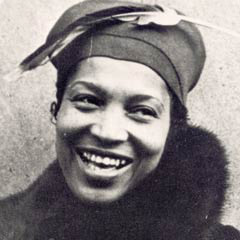 Zora Neale Hurston 1891-1960 |
![]()
Tuesday, 6 December 2016: final exam (email deadline midnight Wednesday 7 December)
![]()
Grade reports will be returned 5-10 days after final exam submissions.
![]()
![]()
![]()
![]()
![]()
![]()
![]()
![]()
![]()
Course Objectives
Objective 1: Literary Categories of Romanticism
To identify and criticize ideas or attitudes associated with
Romanticism, such as
desire and loss, rebellion,
nostalgia, idealism,
the
gothic,
the sublime, the individual in nature
and/or
separate from the masses.
![]() Romance narrative: A desire
& quest for anything besides
“the here and now” or “reality," a journey to cross physical, social, or
psychological boundaries in order to attain or regain some
transcendent goal or
dream.
Romance narrative: A desire
& quest for anything besides
“the here and now” or “reality," a journey to cross physical, social, or
psychological boundaries in order to attain or regain some
transcendent goal or
dream.
![]() characterization: A Romantic hero or heroine may appear empty or innocent of anything
characterization: A Romantic hero or heroine may appear empty or innocent of anything
except readiness to change or yearning to re-invent the self or world;
the golden boy and fair lady; also their counterparts, the dark lady and the Byronic hero
Objective
1b. The
Romantic Period
![]() To observe
Romanticism’s co-emergence in the
late
18th through the 19th centuries
To observe
Romanticism’s co-emergence in the
late
18th through the 19th centuries
with the rising middle class, urbanization,
industrial capitalism, consumer culture, & nationalism.
![]() To observe
predictive elements
in “pre-Romantic” writings from
earlier periods &
To observe
predictive elements
in “pre-Romantic” writings from
earlier periods &
residual
elements in “post-Romantic”
writings from later periods
Objective
1c: Romantic Genres
![]() the
romance narrative
or novel (journey from repression to transcendence)
the
romance narrative
or novel (journey from repression to transcendence)
![]() the
gothic novel
or style (haunted physical and mental spaces, the shadow of death or decay;
dark and light in physical and moral terms; film noir)
the
gothic novel
or style (haunted physical and mental spaces, the shadow of death or decay;
dark and light in physical and moral terms; film noir)
![]() the
lyric poem
(a momentary but comprehensive cognition or transcendent feeling—more
prominent in European than American Romanticism?)
the
lyric poem
(a momentary but comprehensive cognition or transcendent feeling—more
prominent in European than American Romanticism?)
![]() the
essay (esp. for Transcendentalists—descended from the Puritan sermon?)
the
essay (esp. for Transcendentalists—descended from the Puritan sermon?)
![]()
Objective 2: Cultural Issues:
America as
Romanticism, and vice versa
2a. To identify the
Romantic
era in the United States of America as
the “American
Renaissance”—roughly the generation before the Civil War
(c. 1820-1860,
one generation
after the Romantic era
in Europe).
2b. To acknowledge the co-emergence and convergence of "America" and "Romanticism." European Romanticism begins near the time of the American Revolution. Subsequently Romanticism and the American nation develop ideas of individualism, sentimental nature, rebellion, and equality in parallel.
2c. Racially divided but
historically related "Old and New
Canons" of Romantic literature:
![]() European-American: from
Emerson’s Transcendentalism to Fitzgerald’s Jazz Age
European-American: from
Emerson’s Transcendentalism to Fitzgerald’s Jazz Age
![]() African American: from the
Slave
Narratives of Douglass and Jacobs to the Harlem Renaissance
of Hughes, Hurston,
and Cullen
African American: from the
Slave
Narratives of Douglass and Jacobs to the Harlem Renaissance
of Hughes, Hurston,
and Cullen
![]() American Indian: conflicted Romantic icon in Cooper and Zitkala-Sa.
American Indian: conflicted Romantic icon in Cooper and Zitkala-Sa.
![]() (Mexican American Literature is not yet incorporated into this
course—seminar will discuss.)
(Mexican American Literature is not yet incorporated into this
course—seminar will discuss.)
2d. Economically liberal but culturally conservative, the USA creates "Old and New Canons" also in terms of gender
![]() masculine traditions: freedom and the frontier (with variations)
masculine traditions: freedom and the frontier (with variations)
![]() feminine
traditions: relations and
domesticity
(with variations)
feminine
traditions: relations and
domesticity
(with variations)
![]() Also consider
“Classical” and
“Popular” literature as gendered divisions.
Also consider
“Classical” and
“Popular” literature as gendered divisions.
2e. American Romanticism exposes competing or complementary dimensions of American identity:
Is
America a culture of sensory and material
gratification or moral, spiritual,
idealistic mission?
2f. If "America" and "Romanticism" converge, to what degree does popular American culture and ideology—from Hollywood to human rights—represent a derivative form of classic Romanticism?


